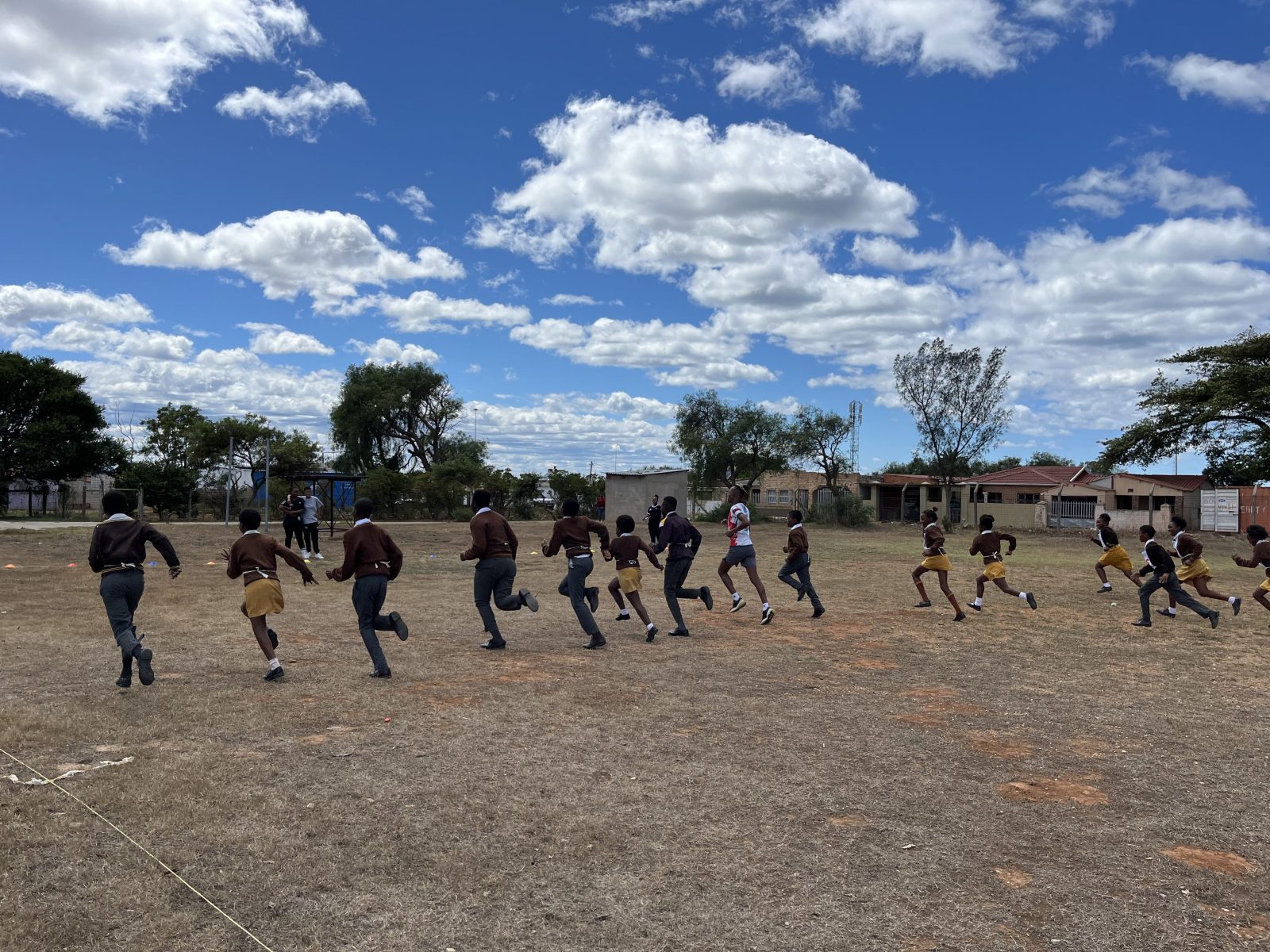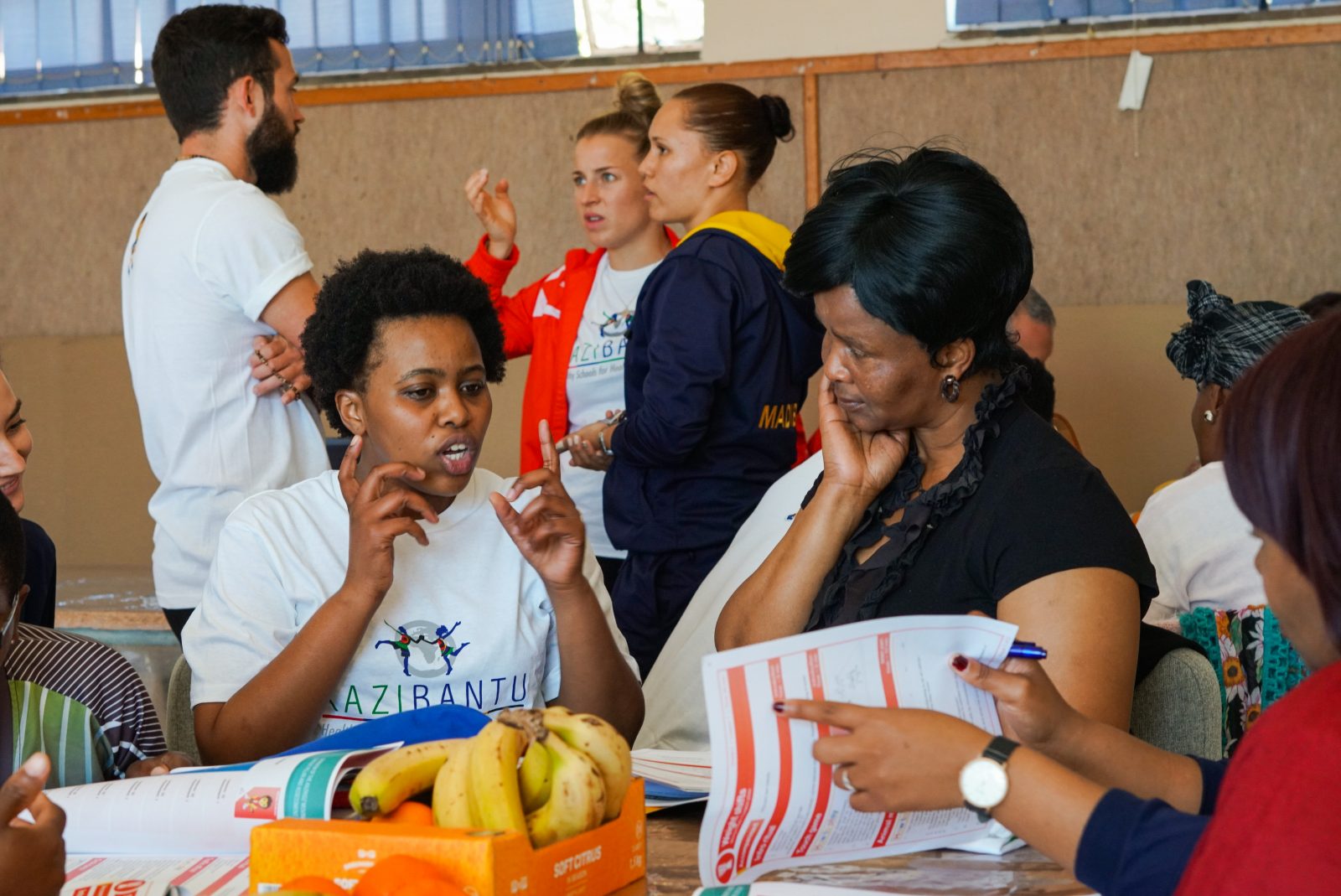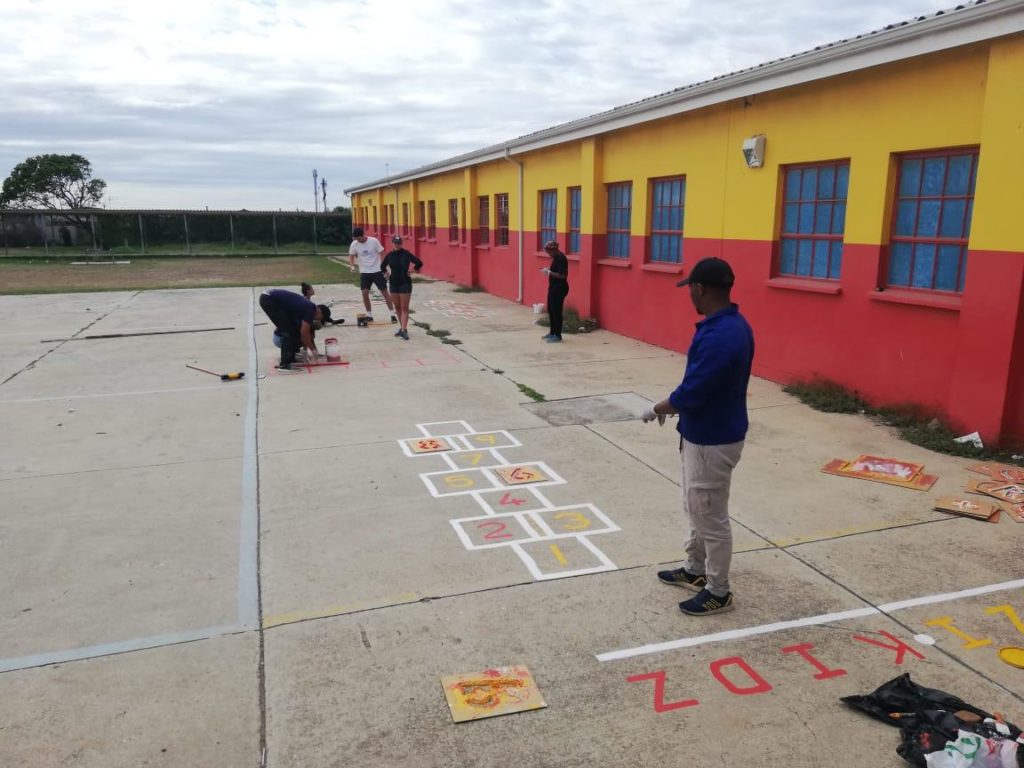Dear Parents, Dear Teachers,
The KaziBantu initiative not only develops lesson plans and learning materials for schoolchildren, but it also engages in the conduction of scientific research.
In this article, we would like to introduce you to one of our recent research papers published (this one):
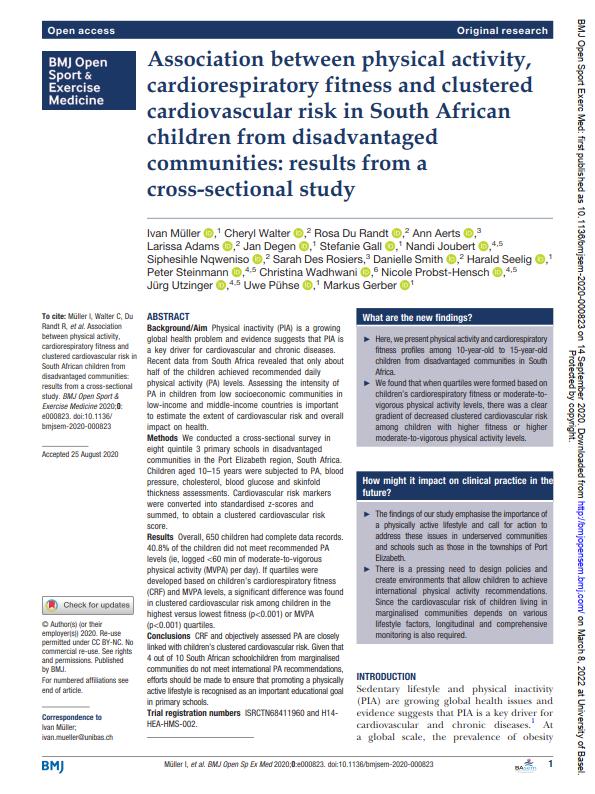
The most entertaining read
…is not always provided by a scientific paper – agreed.
However, scientific papers form the basis for subsequent decisions that influence everyday teaching and learning at school. Thus, please find below the result of a challenge we investigated:
Bringing across the main reasoning and findings of a scientific paper in a 2-minute read – easily understandable for everyone, at the first read.
We hope to successfully deliver on this challenge – you decide whether we succeeded 🙂
Cardiovascular diseases
You might have heard of cardiovascular diseases – such as high blood pressure, strokes, heart attacks, and others. Basically, a collection of diseases that affect your heart or blood vessels. Across the world, cardiovascular diseases are the leading cause of death. However, a large amount of these diseases are preventable (some say up to 90%).
Therefore, it is very important to understand why these diseases happen so that we can understand how to stop them.
A lot of habits and circumstances have been identified that may lead to cardiovascular diseases. These are for example:

Risk factors for cardiovascular diseases
Luckily, most of these risk factors are modifiable: E.g. changing your own nutrition habits might not be easy, but it is possible. Which in turn then affects your risk of developing a cardiovascular disease.
And this is exactly where the main focus of the KaziBantu initiative lies:
- Gain a better understanding of risk factors promoting cardiovascular diseases.
- And thereafter, based upon this better understanding, develop better interventions to decrease the risk factors (and thus prevent the diseases).
Now, since you have the big picture – let’s dive into the actual paper, and narrow down our focus even further:
The questions
The scientific paper presented here has a special focus on the above-mentioned risk factor “low physical activity”. More specifically, it tries to answer two questions:

Question 1) What’s the status of the risk factor “low physical activity” among children from lower-socioeconomic communities?
This question kind of ‘sets the scene’: Before doing any complicated reasoning, we just describe what’s there – right in front of us. How much do the kids actually move? Is this amount of activity too little or enough?
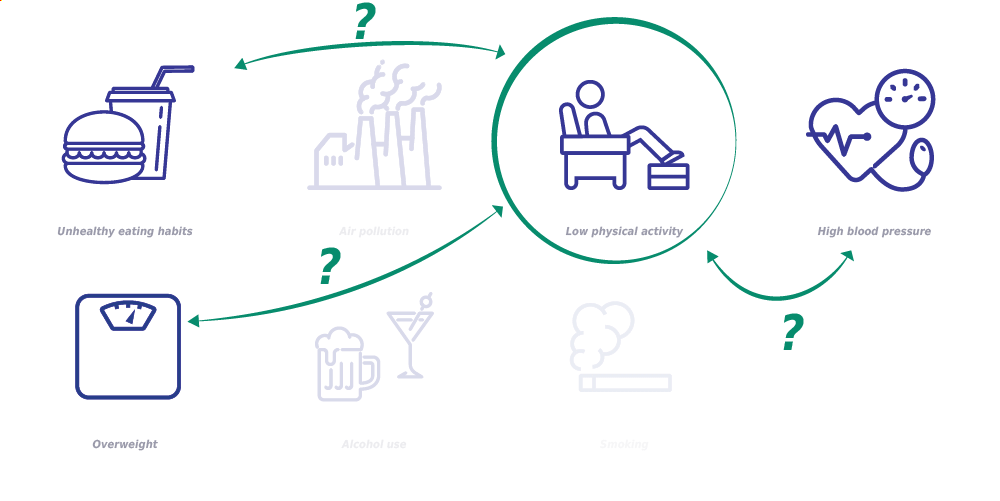
Question 2) How does the risk factor “low physical activity” relate to other risk factors?
This question now looks at the connection between “low physical activity” and some other of the above-mentioned risk-factors. By now you must have figured out that some of the risk-factors influence each other: E.g. “low physical activity” is certainly somehow connected with “overweight”.
Luckily, we were able to find some answers to our questions:
The answers
Let us start with the first one: What is the status of the risk factor “low physical activity” among children from disadvantaged communities?
- Answer 1) 4 out of 10 children that we observed did not achieve the recommended amount of physical activity per day. In other words: These children show signs of the risk-factor “low physical activity”, which is not so good. *
* The World Health Organization recommends that children should be active for at least 1 hour per day.
On to the second question: How does the risk factor “low physical activity” relate to other risk factors?
- Answer 2) Wait for it, we’ll get there in a second.
Because first we need to introduce one additional step in regards to the risk-factors from above:
Clustering of risk factors
Quite a bunch of the risk-factors are interconnected – some more and some less (“low physical activity” certainly has something to do with “overweight”, whereas a connection between “air pollution” and “alcohol use” seems rather unlikely).
Now imagine you pick a bunch of strongly interconnected risk-factors, and you toss them all into one basket. Or in other words: you cluster them. And you actually look at this basket (= the “clustered cardiovascular risk”), rather than the individual factors. This is what we did in order to answer question number 2.
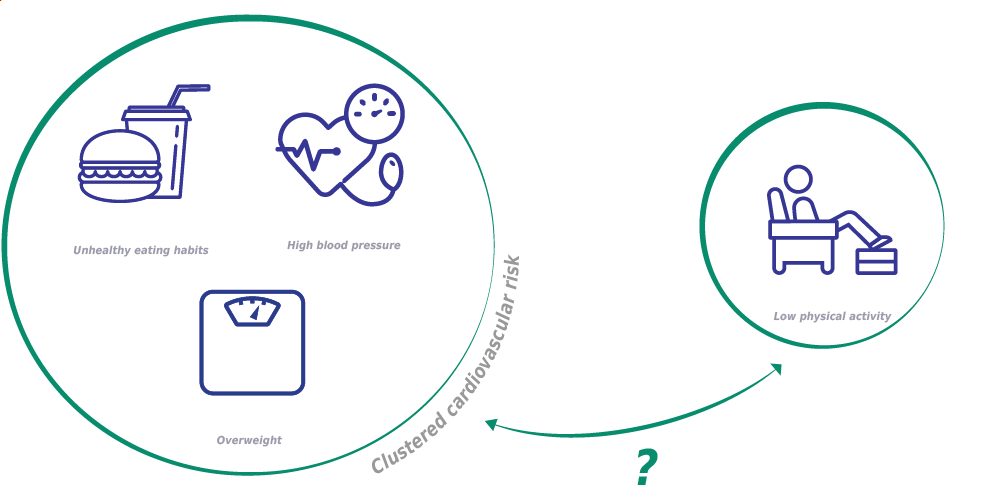
Clustering of risk factors for cardiovascular diseases
The answers – part 2
So now, on to the second question:
How does the risk factor “low physical activity” relate to other risk factors?
Answer 2) The more active the children were, the lower was their clustered-cardiovascular risk score:
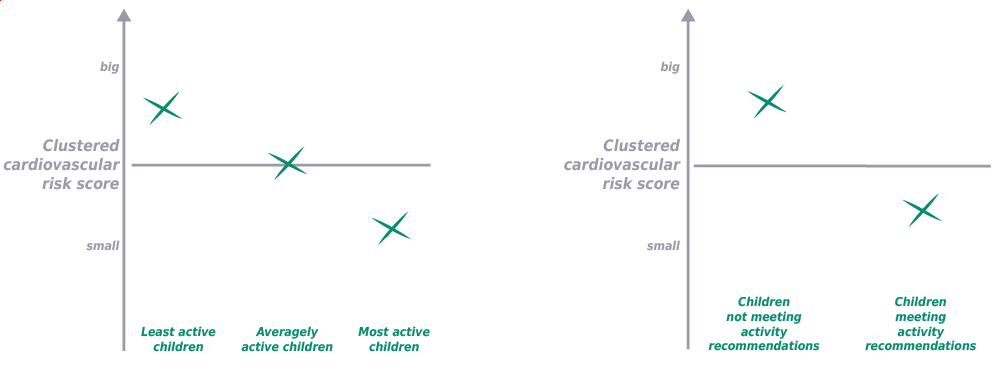
Voilà
… this was your 2-minute read.
Of course, you can always dig deeper, the original piece is available online.
And you can dig even deeper: this article provides a very thorough overview of cardiovascular diseases all across the world.
We hope you enjoyed reading and wish you all the best.
On behalf of the KaziBantu team, Jan Degen

